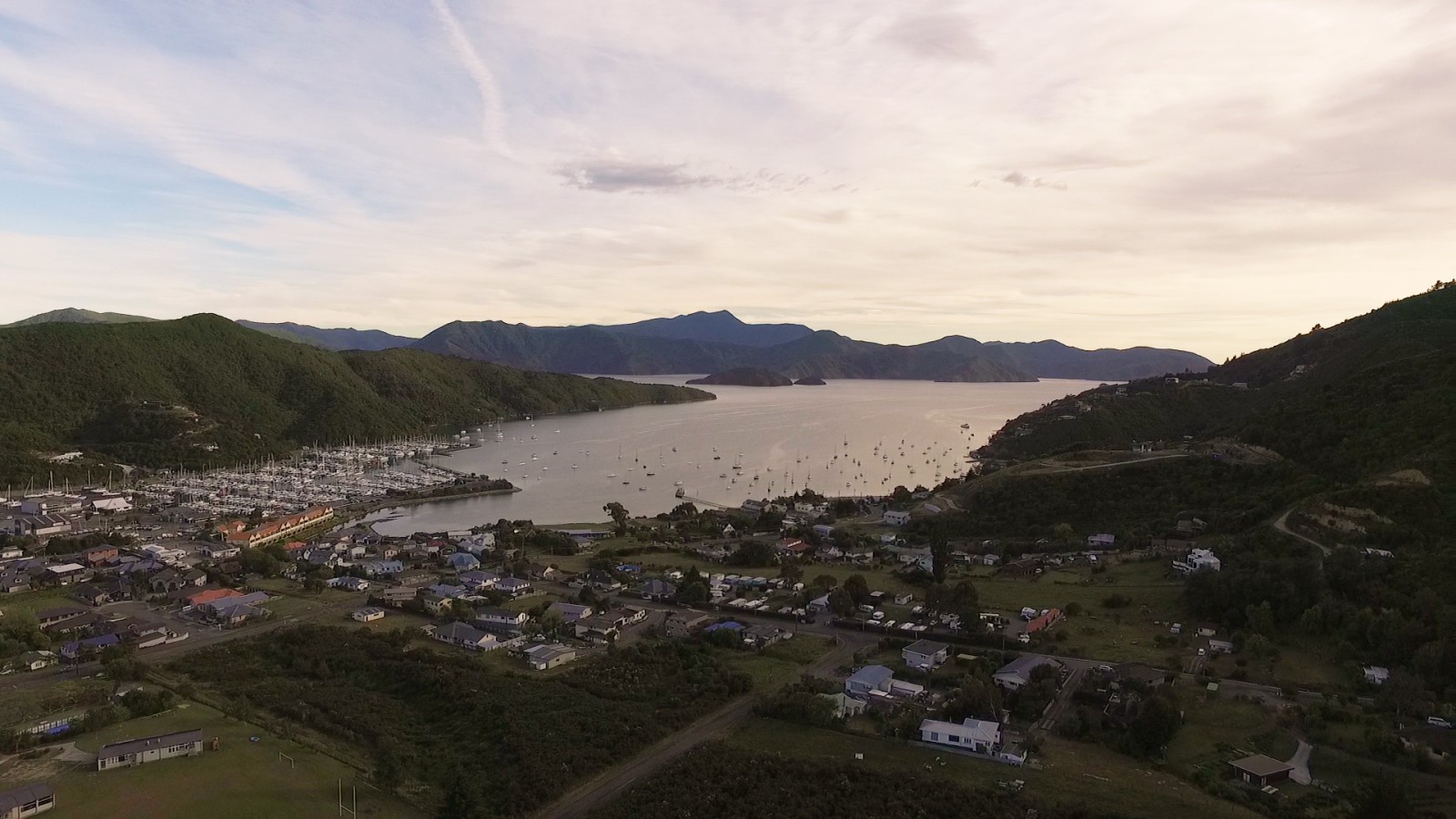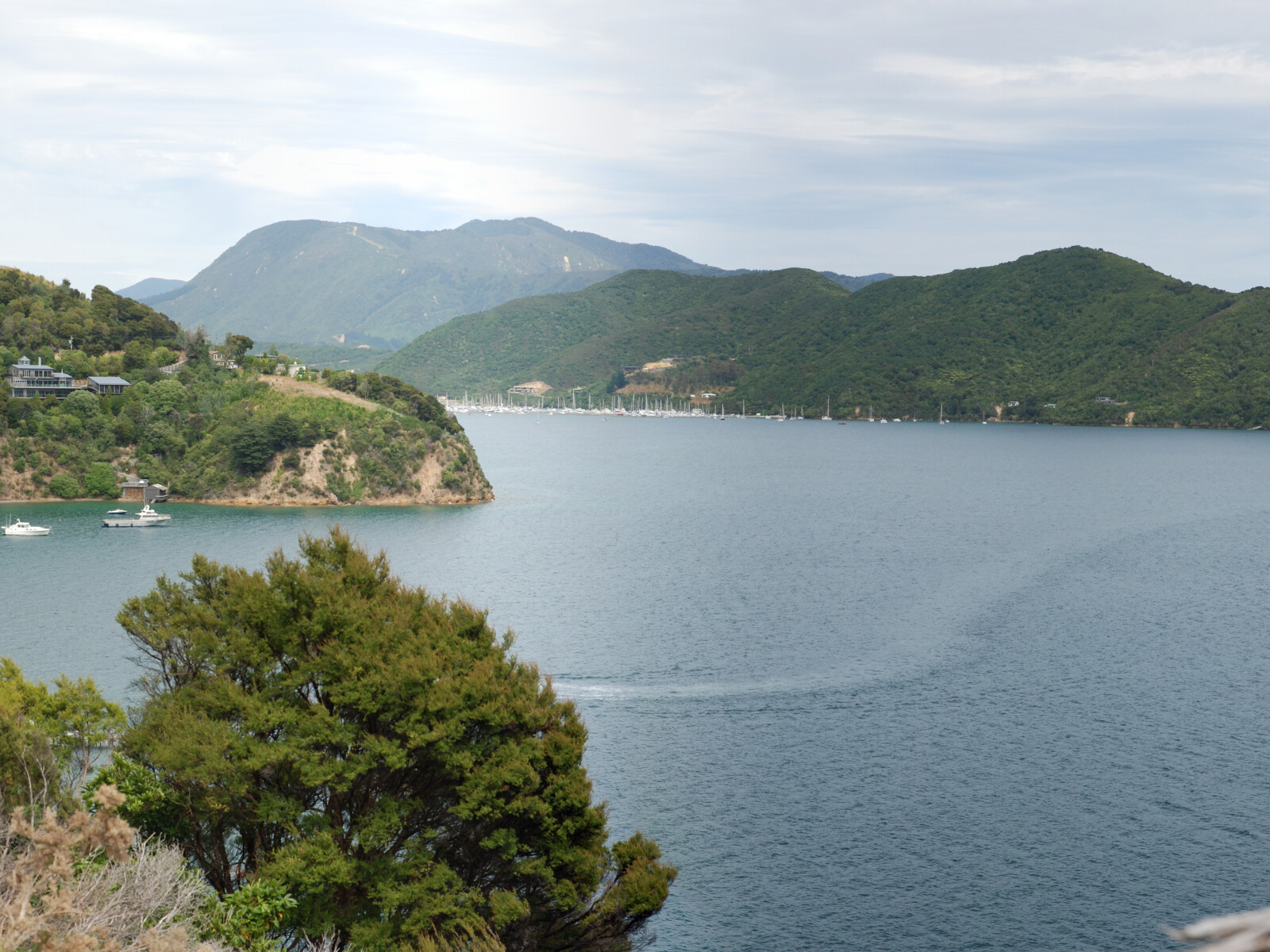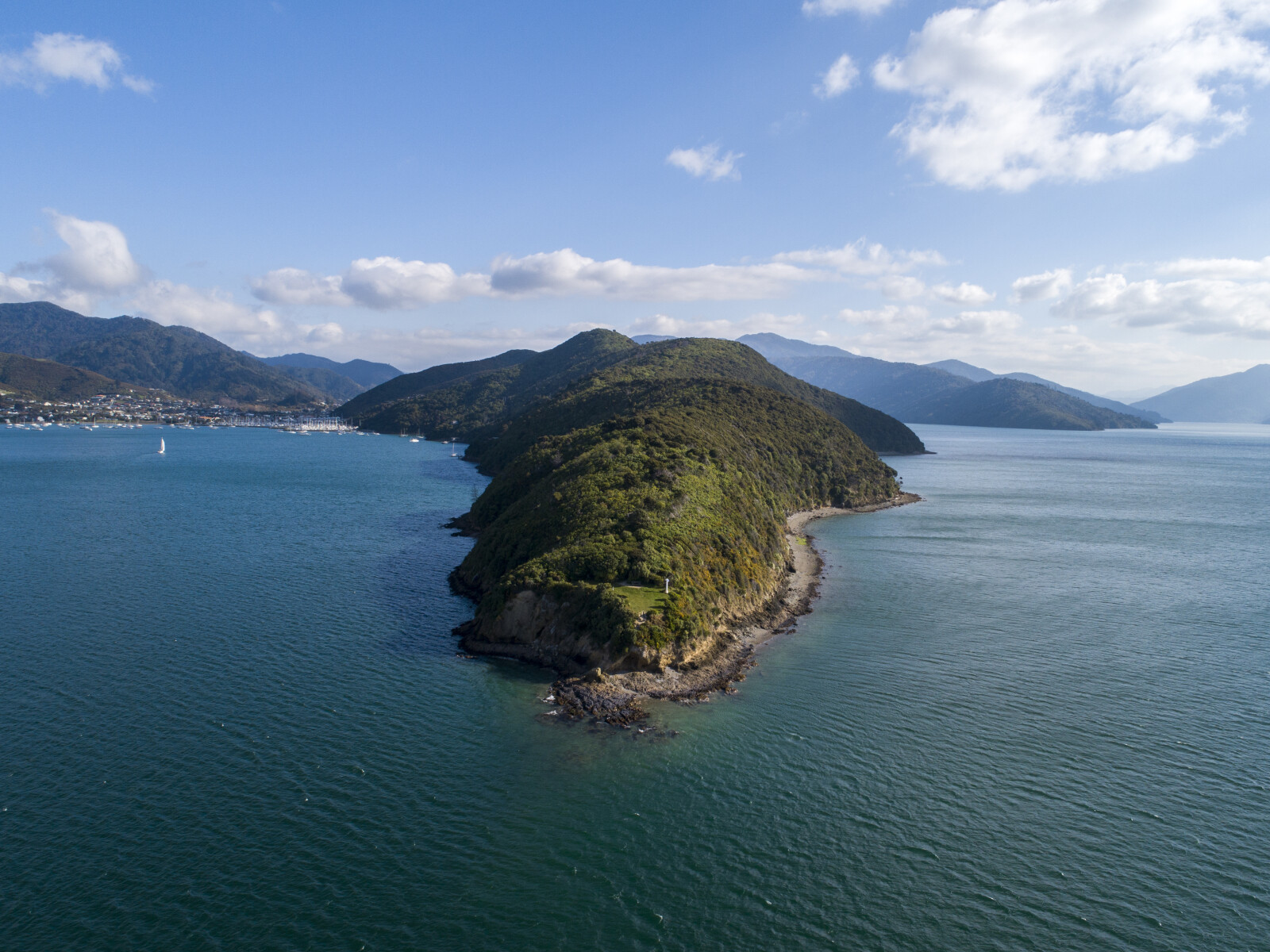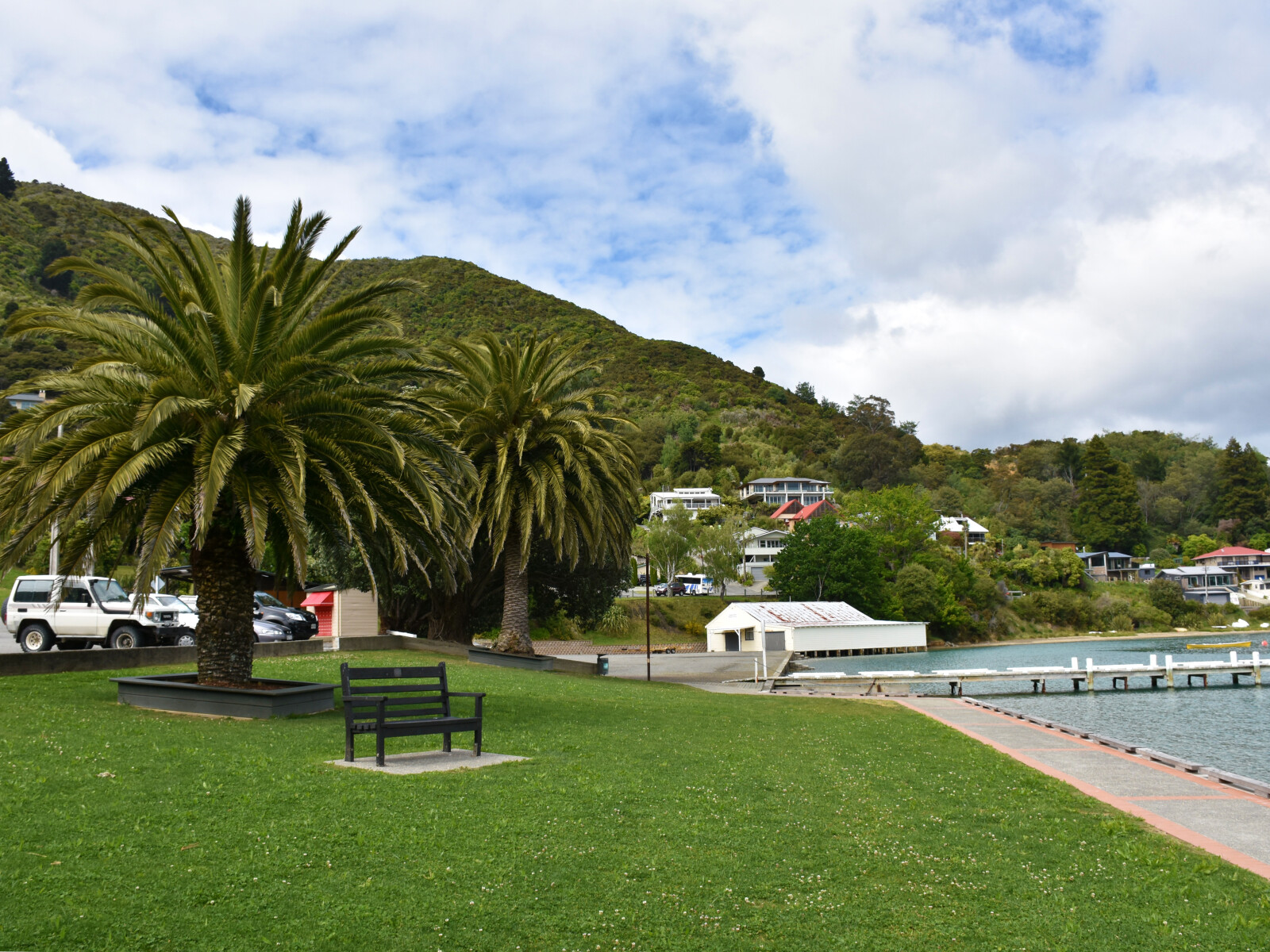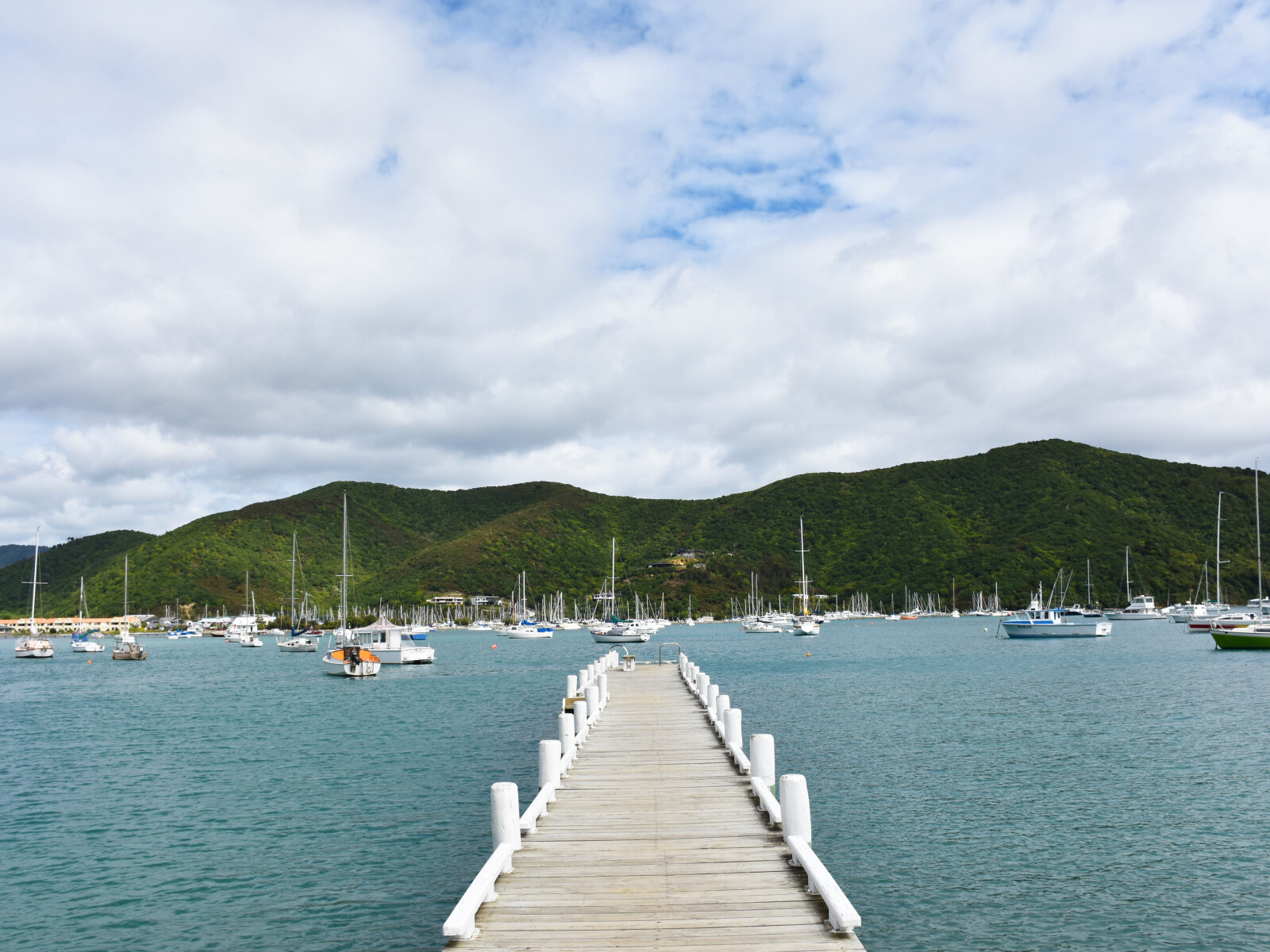The name of this bay means bitter water.
During the Nineteenth Century it was also referred to as Milton Bay.1
As with other bays near Picton Harbour, Waikawa has a long history of human use and at least eight iwi (tribes) are associated with the area, including Te Ātiawa o Te Waka-a-Māui, Rangitāne o Wairau, Ngāti Kuia, Ngāti Apa, Ngāti Toa, Ngāti Koata, Ngāti Rarua, and Ngāti Tama.2
Early Māori used bays in this area of Tōtaranui/Queen Charlotte Sound frequently. They gathered here for many reasons, for socialising and organising, for visiting relatives and for gathering kiamoana (seafood) and cultivating crops.3
In 1850, following the purchase of Waitohi/Picton by the New Zealand Company, members of the iwi, Te Ātiawa o Te Waka-a-Māui settled in Waikawa. Previously living in a pā (fortified village) in Waitohi/Picton, the community relocated to Waikawa, building individual residences based on town sections that had been laid out as part of the negotiations.4
From this point onwards, Te Ātiawa o Te Waka-a-Māui cultivated land in the bay and collected kaimoana. They used and managed the Waikawa Stream and wetlands as a source of food and harvested flax and other plants, including the kawakawa tree, for practical, ceremonial and medicinal purposes.5
Sometime during the 1850s or early 1860s, a typhoid outbreak killed many people living in Waikawa. Ropoama Te One, the local rangatira (chief) is purported to have ended the outbreak by locating a clean source of drinking water. A memorial to commemorate the end out the outbreak and identify the spring was erected during the 1970s.6
In 1877 Waikawa School was established on the landing reserve in the bay, on a site known as the Oaks. The school remained here until 1928 when it was relocated, following a fire, further down the valley towards Waitohi/Picton. The first teachers at the school were Mr T Lewis and his daughter, Miss Lewis.7
The Snout is the long headland that separates the Waikawa valley and bay from Picton Harbour. It rises up beside Picton Marina and continues along past Waikawa Marina and out into Tōtaranui/Queen Charlotte Sound. The Snout is the site for much of the Victoria Domain recreational area. It contains many popular walking tracks.
The area was also a traditional food gathering site for Māori and was known by several names including Te Ihu Moeone, referring to a worm, Te Pahoahoa referring to a snout and Te Tungara, the name for the highest and most southern point on the ridge, which refers to a taniwha.8
On Karaka Point, the headland between Waikawa and Whatamango Bays, lies Te Rae o Karaka Historic Reserve. The reserve contains the remains of a historic pā which was built by early Ngāti Mamoe residents sometime around the Sixteenth Century. Over the centuries succeeding tribes took ownership of the pā, including Te Ātiawa o Te Waka-a-Māui who took the pā and surrounding area by right of conquest in 1830.
For a long period of the time the land on the headland was cleared and farmed but during the 1950s it was awarded reserve status. The area now hosts historical information panels, carvings and a fenced walkway.9
During the 1980s significant developments occurred in the bay. In 1986 the foundations of Waikawa Marae were laid10 and two years later, in 1988, the Waikawa Marina was completed.11
1. Insull, A. H. A., Marlborough Place Names, (Wellington: A. H. & A. W. Reed, 1952) 67.
2. E. Newcombe and O. Johnston, “Picton Bays Environmental Information and Health Assessment, Cawthron Report No. 2805”, accessed, July 30, 2019, http://envirolink.govt.nz/assets/Envirolink/1606-MLDC-106-Picton-Bays-Environmental-Information-and-Health-Assessment.PDF .
3. Marlborough District Council, Nelson City Council and Tasman District Council, “Te Tau Ihu Statutory Acknowledgements 2014”, accessed April 2, 2019, http://www.nelson.govt.nz/assets/Environment/Downloads/TeTauIhu-StatutoryAcknowledgements.pdf .
4. Julie Kennedy, “Sir Thomas Picton (1758-1815) and the naming of Picton”, the Prow.org.nz, accessed July 23, 2019, http://www.theprow.org.nz/yourstory/sir-thomas-picton/#.XTbGG-gzbIU .
5. Marlborough District Council, Nelson City Council and Tasman District Council, “Statutory Acknowledgements”.
6. Loreen Brehaut, “Ropoama’s Spring”, The Prow, accessed September 10, 2019, http://www.theprow.org.nz/yourstory/ropoamas-spring/#.XXb6nCgzbIU .
7. Mike Taylor, The History of Waikawa Bay School: Queen Charlotte Sound, (Picton: Mike Taylor, 2012) 11-13.
8. Marlborough District Council, “Victoria Domain”, accessed October 13, 2020, https://www.marlborough.govt.nz/recreation/parks-and-open-spaces/parks-and-open-spaces-plans-and-reports/victoria-domain .
9. Loreen Brehaut, “Te Rae o Karaka or Karaka Point”, The Prow,org.nz, accessed, July 23, 2019, http://www.theprow.org.nz/places/te-rae-o-karaka/#.XTAtbegzbIU .
10. Julie Kennedy, Chronology of Picton and Queen Charlotte Sound, (Picton, Picton Historical Society, 2009) 54.
11. Tony Fitzgerald, It’s Our Life: The Imperfect History of the Waikawa Boating Club Inc., 1950-2017, (Blenheim: Prisma Print, 2017) 35.

